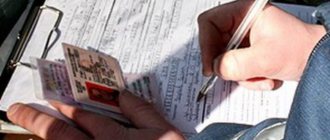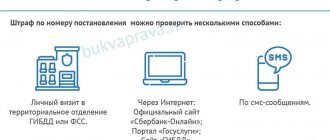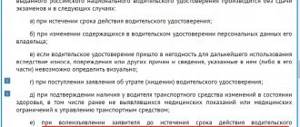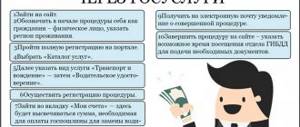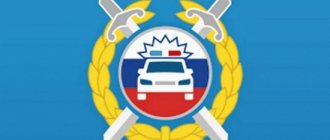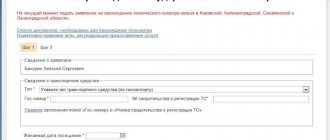Criminal Code
Every road user is responsible for his or her actions as a pedestrian, driver or passenger in a vehicle.
Responsibility is:
- Disciplinary;
- Criminal;
- Administrative;
- Civil.
All types of liability are reflected in the relevant codes - Criminal (Criminal Code of the Russian Federation), Civil (Civil Code of the Russian Federation), Labor (Labor Code of the Russian Federation) and the Code of Administrative Offenses (CAO RF).
Disciplinary responsibility
Disciplinary liability is the responsibility of an employee to his employer for violations of labor or production discipline.
According to Article 192 of the Labor Code of the Russian Federation, there are three types of disciplinary punishments - reprimand, reprimand and dismissal on appropriate grounds.
A driver who is not employed does not bear disciplinary liability, but the other three types of liability apply to him in full. Wherein:
- criminal liability occurs for the most serious offenses - crimes;
- administrative liability arises for actions that pose less of a danger to society - administrative offenses;
- civil liability occurs in situations involving the infliction of property or other harm to victims.
It is important to know! Criminal and administrative liability cannot be applied jointly for the same act, since any violation of the law that entails liability is considered either a crime or an administrative offense. At the same time, issues of compensation for harm are resolved only within the framework of civil liability. Therefore, in most cases, the offender, in addition to criminal or administrative, simultaneously bears civil liability for his actions.
Ambulance
Drivers of vehicles bear the most serious responsibility for a traffic accident caused by them in which people were injured or killed. In this case, an accident may be accompanied by:
- minor bodily injuries;
- moderate bodily injury;
- serious bodily harm;
- death of the victim.
The decision on the severity of the damage caused is made by a forensic medical examination. Causing minor and moderate bodily harm entails administrative liability.
Causing serious bodily harm associated with long-term loss of ability to work (disability) or death of a person is considered a crime for which criminal liability arises.
It is important to know! Any person may be subject to criminal or administrative liability only if his guilt is established and proven by a court or other competent authority. After establishing guilt, taking into account the nature of the offense, the presence of aggravating and mitigating circumstances, the type and amount of punishment is selected. It cannot exceed the limits established by the relevant article of the Criminal or Administrative Code, the requirements of which the accused violated.
Criminal liability
Article 264 of the Criminal Code of the Russian Federation provides for punishment for violation by a person driving a car, tram or other mechanical vehicle of traffic rules or the operation of vehicles, resulting in negligence in causing:
| Parts of Art. 264 of the Criminal Code of the Russian Federation | Consequences | Punishment for a sober driver | Punishment for a drunk driver |
| 1 and 2 | serious harm to human health | imprisonment for up to 2 years with or without deprivation of rights for up to 3 years | imprisonment for up to 4 years with deprivation of rights for up to 3 years |
| 3 and 4 | death of a person | imprisonment for up to 5 years with deprivation of rights for up to 3 years | imprisonment for up to 7 years with deprivation of rights for up to 3 years |
| 5 and 6 | death of two or more persons | imprisonment for up to 7 years with deprivation of rights for up to 3 years | imprisonment for up to 9 years with deprivation of rights for up to 3 years |
The Criminal Code also provides for articles providing for similar punishment for poor-quality repairs of vehicles and their release into service with technical defects (Article 266) and for violating the rules ensuring the safe operation of transport (Article 268).
A crime can be not only an illegal action, but also an illegal omission.
Thus, a driver who caused an accident and fled the scene without providing assistance to the victims is liable under Article 125 of the Criminal Code “Leaving in danger.” This article provides for various types of punishment, up to imprisonment for a period of 1 year.
It is important to know! Criminal punishment can only be imposed by a court verdict after a comprehensive and thorough consideration of the circumstances of the incident.
Administrative responsibility
As already mentioned, violation of the Traffic Rules or vehicle operating rules, resulting in minor or moderate harm to health, is an administrative offense. Punishment for it is provided for in Article 12.24 of the Code of Administrative Offenses of the Russian Federation.
| Article of the Code of Administrative Offenses of the Russian Federation | Consequences | Punishment |
| 12.24, part 1 | slight harm to human health | a fine of 2,500 to 5,000 rubles or deprivation of rights for a period of 1 to 1.5 years |
| 12.24, part 2 | moderate harm to human health | a fine of 10,000 to 25,000 rubles or deprivation of rights for a period of 1.5 to 2 years |
In the event of an accident with victims, the driver who left the scene of the accident in violation of the Rules and thereby violated paragraph 2.5 of the Traffic Regulations is liable under Part 2 of Article 12.27 of the Code of Administrative Offenses, if his unlawful inaction does not fall under an article of the Criminal Code.
This article of the Code of Administrative Offenses provides for punishment in the form of deprivation of rights for a period of 1 to 1.5 years or administrative arrest for a period of up to 15 days. At the same time, the judge does not have the right to replace these types of punishment with a fine, since the Code does not provide for a fine for this violation.
In cases where the driver, in violation of the Rules, left the scene of an accident in which there were no casualties, his actions must be qualified as failure to fulfill the obligations of a participant in the accident provided for in paragraphs 2.6 and 2.6.1 of the Rules. In such cases, Part 1 of Article 12.27 of the Code of Administrative Offenses is applied - a fine of 1000 rubles.
Let's consider the punishment for drivers for violations related to intoxication. The legislation does not attach importance to what type of intoxication is detected in the offender - alcohol, drugs or other.
In most countries of the world, intoxication is understood as exceeding the permissible concentration of intoxicating substances in the blood or air exhaled by a person.
The minimal presence of such substances in the body, which is not dangerous for driving, may not be associated with the use of alcohol or drugs, but may be a consequence of certain chronic diseases.
In Russia, administrative liability occurs in the presence of absolute ethyl alcohol in a concentration of 0.16 milligrams per liter of exhaled air, or in the presence of narcotic or psychotropic substances in the human body. However, driving even after drinking a minimum amount of alcohol is strictly prohibited.
Survey
To establish the fact of intoxication, a procedure called examination is used. It can be carried out directly at the place where the vehicle is stopped or in a drug laboratory. In the first case, the driver is tested for alcohol intoxication.
To determine the presence of alcohol in the exhaled air, a device called a breathalyzer is used. A person monitoring road safety, that is, an employee of the State Traffic Inspectorate, has the right to conduct a test using a breathalyzer.
The breathalyzer does not detect intoxication caused by the use of drugs or other non-alcoholic intoxicants. Therefore, if necessary, a medical examination procedure is carried out to determine the state of any intoxication.
Such a check is longer, but also more reliable. It can only be carried out by a professional - a doctor qualified as a psychiatrist-narcologist. In this case, the role of the traffic inspector is that he directs the driver for a medical examination, for which he draws up a protocol and organizes the delivery of the suspect to the laboratory.
The driver may refuse the alcohol intoxication test carried out by the traffic police officer and instead request to be sent for a medical examination. This can be done both before and after receiving the breathalyzer readings.
In both cases, the traffic inspector is obliged to satisfy such a requirement. However, if the breathalyzer did not reveal signs of alcohol intoxication, and traffic police officers still have suspicions that the driver was taking other intoxicating substances, they can refer the driver to a narcologist on their own initiative.
At the same time, the driver does not have the right to refuse the procedure of undergoing a medical examination, since such a refusal, recorded in the protocol and confirmed by his signature, is equivalent to driving a vehicle while intoxicated.
The Code of Administrative Offenses of the Russian Federation provides the following punishment for violations related to intoxication:
| Article of the Code of Administrative Offenses of the Russian Federation | Violation | Punishment |
| 12.8, part 1 | Driving while intoxicated | Fine 30,000 rubles with deprivation of rights for 1.5-2 years |
| 12.8, part 2 | Transferring control to a person who is intoxicated | |
| 12.26, part 1 | Refusal of medical examination for intoxication | |
| 12.27, part 3 | Use of intoxicating substances after an accident or stop by a traffic police officer before an examination for intoxication | |
| 12.8, part 4 | Repeated driving while intoxicated | Fine 50,000 rubles with deprivation of rights for 3 years |
| Repeated transfer of control to a person who is intoxicated | ||
| 12.8, part 3 | Driving while intoxicated without a driver's license | administrative arrest for a period of 10 to 15 days |
| 12.26, part 2 | Refusal of a medical examination for intoxication in the absence of a driver's license | |
Professional driver
Thus, the new Code provides for punishment for those who work as drivers without the right to do so .
For the first violation, the sanctions will be 5-15 thousand rubles , for a repeated violation - 20-30 thousand rubles or compulsory work (from 40-60 hours) or administrative arrest (up to 5 days).
For those who have been deprived of the right to work as a driver, the liability will initially be stricter - up to a 30 thousand ruble fine or up to 15 days of administrative arrest.
In addition, 30 thousand rubles will be collected from the one who hired such a driver .
By the way, the fact that a similar article will appear in the Code of Administrative Offenses means, in essence, that drivers will still be divided into amateurs and professionals .
Let us remind you: the Ministry of Transport proposed introducing additional training for professionals so that they receive the appropriate certificate and confirm it every 5 years .
Types and features of administrative penalties
The driver of a vehicle may be subject to five types of administrative penalties:
- prevention;
- administrative fine;
- deprivation of the right to drive vehicles for a certain period;
- administrative arrest for up to 15 days;
- confiscation of devices and accessories illegally installed on a vehicle.
It is important to know! Employees of internal affairs bodies (State Traffic Inspectorate) have the right to issue a warning or impose an administrative fine. The decision on punishment in the form of deprivation of rights, confiscation or arrest can only be made by a judge. The judge may also issue a warning or impose a fine.
If a fine is imposed, it must be paid at a banking institution or through a payment terminal within 60 days.
For failure to pay a fine within the period established by law, Article 20.25 of the Code of Administrative Offenses provides for punishment in the form of double the amount of the unpaid fine, but not less than 1000 rubles , or administrative arrest for up to 15 days , or in the form of compulsory labor for up to 50 hours .
Sample protocol
If the driver does not agree with the imposition of a fine on him, then the traffic inspector is obliged to draw up a protocol on the administrative offense and record all the circumstances of the case in it. In this case, the decision on punishment is made after analyzing the conflict situation in the traffic police.
To avoid falsification, a copy of the protocol is given to the person in respect of whom it was drawn up. The driver can appeal the decision made on the basis of the protocol in the prescribed manner.
If a traffic violation is detected by a photo or video camera installed on the road and operating in automatic mode, then punishment for such a violation is possible only in the form of a fine provided for in the relevant article of the Code of Administrative Offenses. In this case, the case of violation is not considered, and a decision on the case is made in absentia.
Recording a violation
Since the equipment records the license plate of a vehicle whose driver has violated the Rules, the owner of this vehicle is held accountable unless he proves that another person was driving at the time of the violation.
A copy of the resolution, along with a photograph confirming the fact of the violation, and details for paying the fine, is sent to the owner’s registration address.
If the driver has committed a violation for which the Code of Administrative Offenses provides for punishment in the form of deprivation of rights, then until the court decision enters into force the driver is not considered guilty and cannot be deprived of the opportunity to drive a vehicle.
However, if the court decides to deprive of rights, then after the period for appealing this decision (10 days) has expired, the violator must independently surrender his driver’s license to the traffic police.
The sentence begins to count only after the driver's license is handed over, otherwise the term appointed by the court is extended indefinitely.
At the end of the period of deprivation, the driver’s license is returned to its owner after retaking the theoretical exam at the traffic police.
It is important to know! If the violator evades payment of the fine, the statute of limitations is interrupted until the evasion is identified and stopped. Thus, unpaid fines have virtually no statute of limitations. In case of violations that entail deprivation of rights, if the driver did not surrender his driver’s license at the place of the violation, then the period of deprivation of the right to drive, established by the court, begins to count only after the driver’s license is confiscated or after filing an application for its loss.
Vehicle detention
administrative procedures may be applied to the driver , which include:
- removal from management;
- detention of a vehicle with its evacuation to a impound lot - until the reason for the detention is eliminated;
- prohibition of operation of a vehicle with or without removal of license plates - until the reason for the prohibition of operation is eliminated;
- examination for intoxication;
- inspection and inspection of the vehicle;
- search of belongings and personal search;
- delivery to the internal affairs bodies;
- administrative detention of the driver or passengers.
All of the above procedures can be used only in specially specified cases if there are sufficient grounds or suspicions. Each procedure is documented in a separate protocol or a separate entry in the protocol on an administrative offense.
Actions related to the infringement of the rights of citizens must be carried out in the presence of at least two witnesses.
Dangerous goods
In the new Code, for violations of the rules for the transportation of dangerous goods, separate liability will be introduced for individual entrepreneurs , who are currently being fined as officials. Initially, however, they were going to equate individual entrepreneurs (following the example of weight and dimensional control) with legal entities, but, apparently, this idea was abandoned.
Thus, sanctions for individual entrepreneurs will amount to 20-25 thousand rubles .
For comparison: officials are punished with 15-20 thousand rubles, legal entities - with 400-500 thousand rubles .
In addition, there will be another really important “clarification” : if now the driver can even be deprived of his license for 4-6 months, then, according to the new document, for the same period he will be prohibited from engaging in activities related to driving a vehicle , and not driving at all by car.
As a result, the Code of Administrative Offenses will include another new type of offense .
